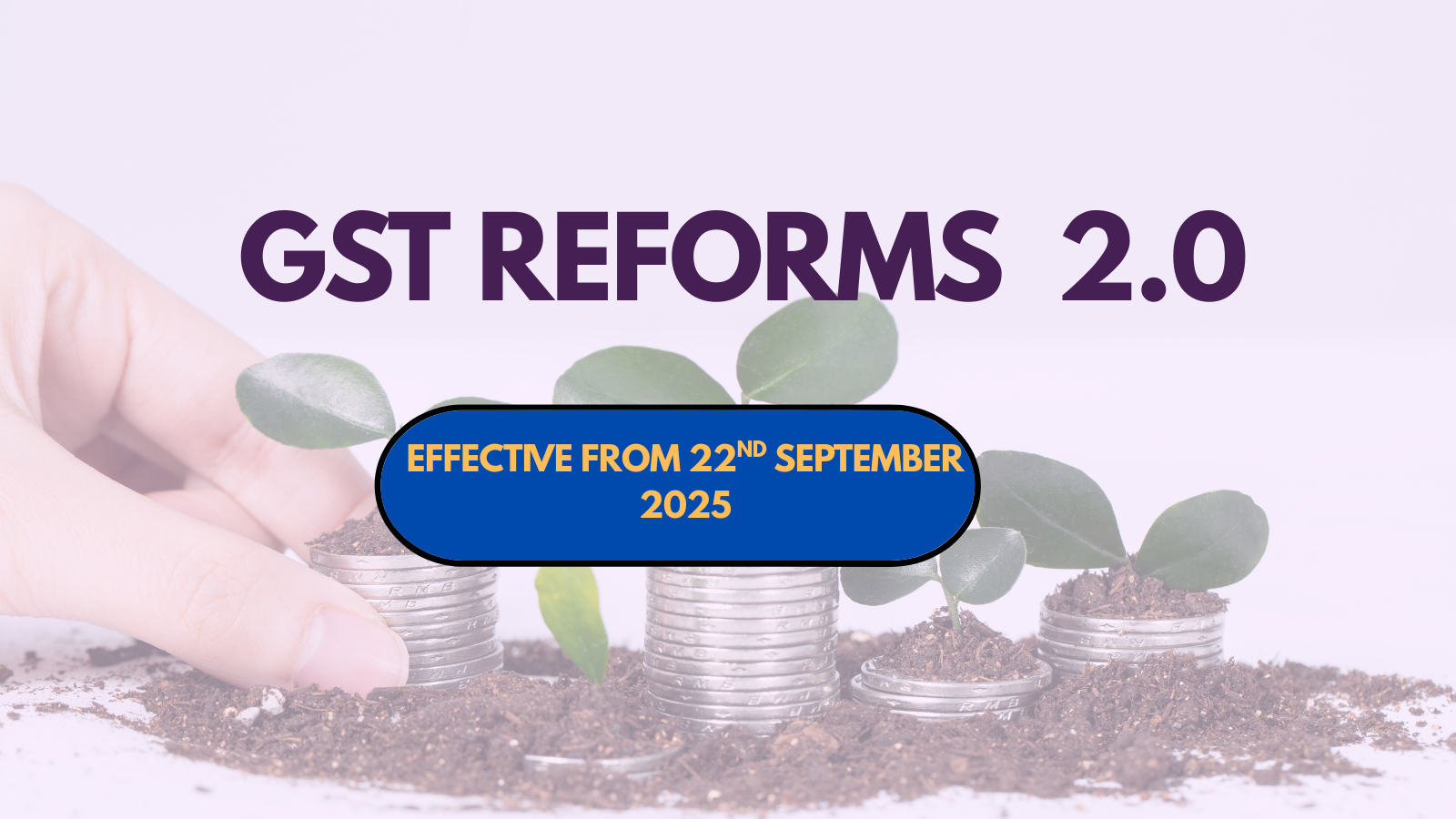The introduction of the Goods and Services tax in India in 2017, marks a crucial turning point in India’s evolving tax landscape. Initially it intended to replace a complicated web of the central and state taxes with a single, transparent system. But, although it was a landmark move towards “one nation, one tax,” it left several unresolves structural issues.
Over time, the original GST became too complicated with multiple tax slabs, compliances and inconsistent refund mechanisms. After several years, now the government has launched GST 2.0 in an effort to simplify and strengthen it further. It aims to reimagine how India collects indirect taxes in a way which encourages compliance, supports consumption, and reduces pain points of businesses and consumers.
But What Was Wrong with the Old GST System?
While GST 1.0 brought some improvements in the national market, the businesses and taxpayers faced some issues. Such as:
- Complex Slab Structure: Earlier, five key GST rates were introduced in India. They were: 0%, 5%, 12%, 18%, and 28%. Moreover, special cases of tax were applied on certain items as luxury cars, aerated rinks, and more. This complicated categorization of products and confused the people.
- Compliance Complexity: Multiple returns, frequent changes, and a complicated filing process had made the GST compliance very tricky. The small businesses faced major issues because of this. Frequent policy updates and ever-changing rules problematized their compliance.
- Inverted Duty Structure: The raw materials attracted higher GST than finished goods in some sectors. So, the businesses had to pay more upfront and wait for a long time to get refunds. Thus, it led to blocked input tax credits which further discouraged the domestic manufacturing in textiles and electronics industries.
- Refund Delays: Many exporters and MSMEs faced cash flow issues because of the delays in getting GST refunds, which hampered working capital.
These factors called for a change.
What are the changes? GST REFORM 2.0
The second wave of GST reform addresses these issues. It focuses primarily upon rationalizing the tax slabs, reducing burden, and enhancing efficiency. How?
- Slab rationalization:
GST 2.0 reduces the complications by merging the 12% and 18% slabs. It brings the slabs down to a two-tier structure of:
- Essential goods: Medicines, dairy, staples, and more at 0% or 5%
- Most other goods and services: 15-18%
- Luxury and “sin” goods: Higher rate of 40%
This cuts down litigation and simplifies the slabs.
- Tax Relief on Key Sectors:
The new reform introduced targeted tax cuts for the high-impact sectors which includes affordable insurance, farm equipment, and healthcare devices under the 5% bracket. Home appliances, entry-level cars, and two-wheelers have also shifted to 18% from 28%. This might decrease the input costs in agriculture and healthcare sectors. This in turn, would make the services cheaper for the consumers.
- Tech-driven Compliance:
GST 2.0 pushes for a smarter compliance which involves AI-assisted audits and real-time invoice tracking. It also aims to simplify return filing system, specially for MSMEs and users of the composition schemes. The new reform also intends to improve and make the process of refund faster, to help exporters and small businesses.
What GST 2.0 Means for You and Your Wallet?
Benefits for the Consumers:
- Reduction in the prices of daily essentials such as over-the-counter medicines, basic electronics, and household items such as soaps and other items.
- Simplified tax rates would also lead to greater price transparency. The new reform intends to be easier to understand to simplify the bills.
- Controlling the inflation indirectly might also prove effective during the festive and high-consumption seasons.
Why should the Small Businesses and MSMEs care? Because:
- Compliance burden is decreased. This means that fewer hours and resources are spent on filing. It aims to make life easier for the shopkeepers, service providers, and startups.
- Cash flow is improved due to faster processing of refunds and lower input tax mismatches. This is a game-changer for export businesses as cash in hand can increase. This means better liquidity and growth.
- GST 2.0 is simplified for the benefit of people, so that they can understand it easily and spend less time in tax classification disputes, and more time in managing businesses.
What does it mean for the Major Industries?
- Automotive: Entry-level vehicles would become more affordable and that might boost their demand in semi-urban and rural areas.
- Healthcare: Private healthcare could be more accessible because of the reduction in taxes on medical devices and diagnostic tools under the reduced tax regime.
- Finance and Insurance: Lower taxes on the premiums can push higher adoption of health and life insurance policies.
- Agriculture: Farm equipment and inputs would become cheaper, that would support the rural income and food security.
Conclusion
GST Reform 2.0 is a strategic move towards building a more efficient, inclusive, and transparent economy. By reducing tax slabs, cutting red tape, and focusing on technology, it addresses many of the foundational issues that prevailed during the regime of GST 1.0
However, some challenges do remain:
- Revenue loss is something to worry about, for the States, because of lower GST collections
- Businesses will need time to adapt to the new slab structures
- There is a risk of miscommunication and lack of management
Read the blogs of LegalSathi & Co. for knowing more and minimizing the risk of lack of knowledge regarding the recent updates in Indian legal system, financial system, and more!
For the implementation of GST 2.0 to be successful, and work as it has intended to, it required:
- Consistent enforcement and coordination between the Centre and Staes
- Smooth migration for the businesses and updated invoicing systems
- Monitoring how rate reductions translate to actual price drops on the ground
The new reform shows how the nation wants to simplify doing business, economic efficiency and tending to consumer welfare. If implemented well, this could mark the beginning of a more inclusive, equitable, and future-ready tax regime. One that includes all the businesses from grass root level kirana shop owners, the exporters, salaried employees, to the startup founders, and the MNCs, all at once.







